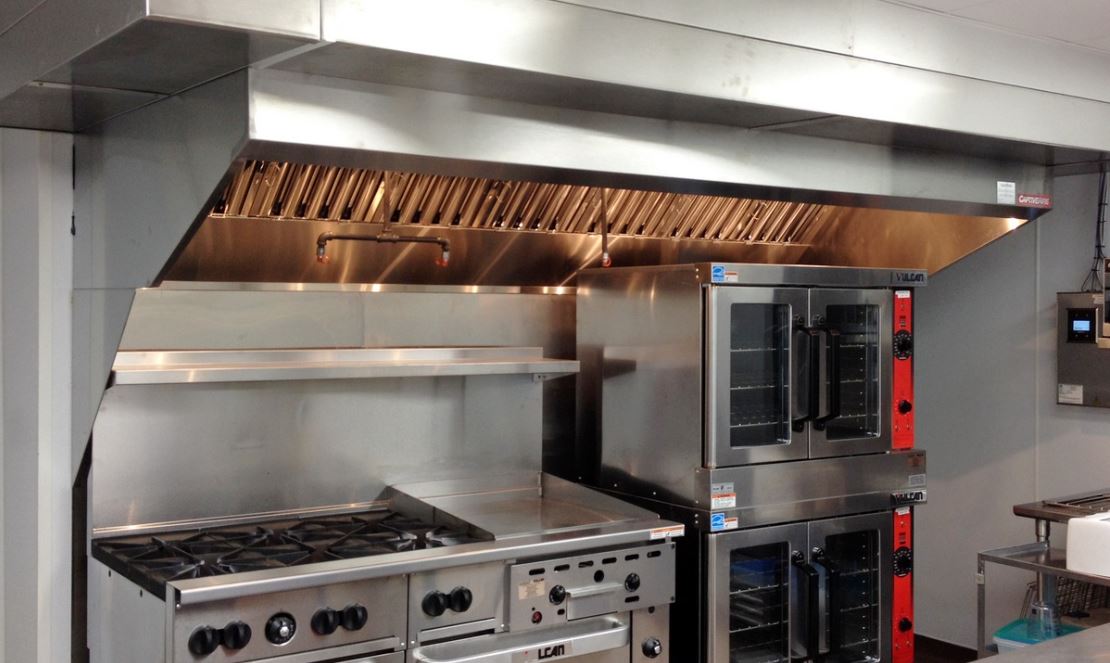Often, the installation of a restaurant hood is considered a task best left to professionals due to its technical nature and the mandatory compliance with various safety standards. However, with a comprehensive understanding of the process, the right set of tools, and a meticulous approach, this task can be undertaken by beginners.
This guide will take you through the necessary steps and precautions required for a successful DIY restaurant hood installation. Furthermore, it will provide insights into post-installation maintenance, ensuring the longevity of your appliance. This information is crucial not only to ensure the safety and efficiency of your kitchen but also to comply with health regulations.
The question now is, are you ready to embark on this journey of self-reliance and skill-enhancement?
Understanding Restaurant Hood Basics
To begin comprehending the intricacies of restaurant hood installation, one must first grasp the fundamental aspects of a restaurant hood, a pivotal piece of equipment designed to ensure safe and efficient kitchen operations. A restaurant hood, also known as an exhaust hood or range hood, is a device containing a mechanical fan that hangs above the stove or cooktop in the kitchen. It removes airborne grease, combustion products, smoke, odors, heat, and steam by evacuation of the air and filtration.
The efficacy of a restaurant hood lies in its dual functionality of improving air quality and preventing fire hazards. Grease, smoke, and heat from cooking operations can accumulate, leading to poor air quality and increased risk of fire. Thus, a well-installed and maintained hood is critical to ensure kitchen safety and compliance with health regulations.
Restaurant hoods can be categorized into Type I and Type II. Type I hoods are used over cooking equipment to remove grease and smoke, whereas Type II hoods, also known as heat or condensation hoods, are used to capture and remove steam, vapor, heat, and odors. Understanding these fundamental aspects is crucial for correct installation and operation.
Gathering Necessary Tools and Equipment
Having established a basic understanding of restaurant hoods and their functionalities, we now turn our attention towards the crucial step of gathering the necessary tools and equipment for the installation process.
The right tools not only ensure a smooth installation but also contribute to the longevity and performance of your restaurant hood.
Here is a detailed list of the necessary tools and equipment:
– Power Drill: This tool is paramount for creating holes for the installation of ductwork and the hood itself.
– Measuring Tape: Precision is key during installation. A measuring tape assists in accurate placement and fitting.
– Screwdriver Set: Used for securing parts into place, a set with various sizes and types is recommended.
– Wrench Set: A necessity for tightening bolts and nuts during the installation process.
– Construction Level: For ensuring the hood is installed evenly and precisely.
To guarantee success, it’s vital to have these tools on hand before you start. Preparation is the groundwork for success in any DIY project, including restaurant hood installation. With the right tools and a detailed guide, installing a restaurant hood can be a straightforward and rewarding task.
Pre-Installation Safety Precautions
Before embarking on the installation process, it is imperative to take into account several safety precautions that mitigate potential risks and ensure a secure and efficient execution of the task. First, verify the power supply is disconnected to avoid electrical shocks. This includes not just the main power but also any auxiliary power sources connected to the kitchen equipment.
Secondly, ensure you have personal protective equipment (PPE) such as safety glasses, gloves, and a dust mask. This will protect you from any dust or debris that may be present during the installation process.
Additionally, maintain a clean workspace. Remove any potential tripping hazards and keep tools and equipment organized to prevent accidents.
Next, when handling the hood, make sure to lift in a correct and safe manner to avoid back injuries. If the hood is heavy, do not attempt to lift it by yourself; seek assistance.
Lastly, always have a fire extinguisher on hand. This is crucial as you are dealing with electrical components.
Step-by-Step Hood Installation Process
Embarking on the hood installation process, one must meticulously follow a detailed sequence of steps to ensure a safe and accurate setup. The process begins with careful planning and precise measurements, as the hood should perfectly accommodate the range or cooktop it will serve.
Here’s a step-by-step guide:
– Step 1: Assess your kitchen layout. Identify the most suitable location for your hood, considering factors like height and proximity to the stove.
– Step 2: Measure the size of the hood and mark the installation points on the wall or ceiling. Double-check these measurements for accuracy.
– Step 3: Secure the mounting brackets to the wall or ceiling using the appropriate tools. Make certain they are firmly attached.
– Step 4: With assistance, lift the hood onto the brackets. Ensure it is level before securing it into place.
– Step 5: Connect the hood to the electrical supply and ductwork. Test the hood to ensure it is functioning correctly.
Each step should be performed with utmost precision to guarantee a safe and efficient hood installation. Adequate preparation, accurate measurements, proper tools, and patience are crucial elements for a successful DIY hood installation.
Post-Installation Tips and Maintenance
Upon successful installation of the restaurant hood, it is imperative to establish a routine for its regular maintenance and understand the necessary post-installation measures for optimal performance. Proper upkeep is crucial to ensure longevity and consistent functionality of the hood system.
First and foremost, clean the hood regularly – at least on a weekly basis – to remove excessive grease and dirt. This will not only keep the hood in a good operational state but also reduce the risk of fire. Use a degreaser specifically designed for commercial kitchen hoods for optimal results. Remember to clean the filters too, as they capture most of the grease and particulates from the cooking fumes.
Second, schedule regular inspections by professionals. Even with diligent cleaning, certain issues may go unnoticed. Therefore, having a professional inspect the hood system at least twice a year is advisable. They will check for any possible structural damage, malfunctioning parts, and ensure the hood system meets local fire codes.
Lastly, if the hood system includes a fire suppression system, ensure it is fully functional and regularly tested. This measure is critical for the safety of the restaurant. With these post-installation care tips, your restaurant hood will continue to operate efficiently.

